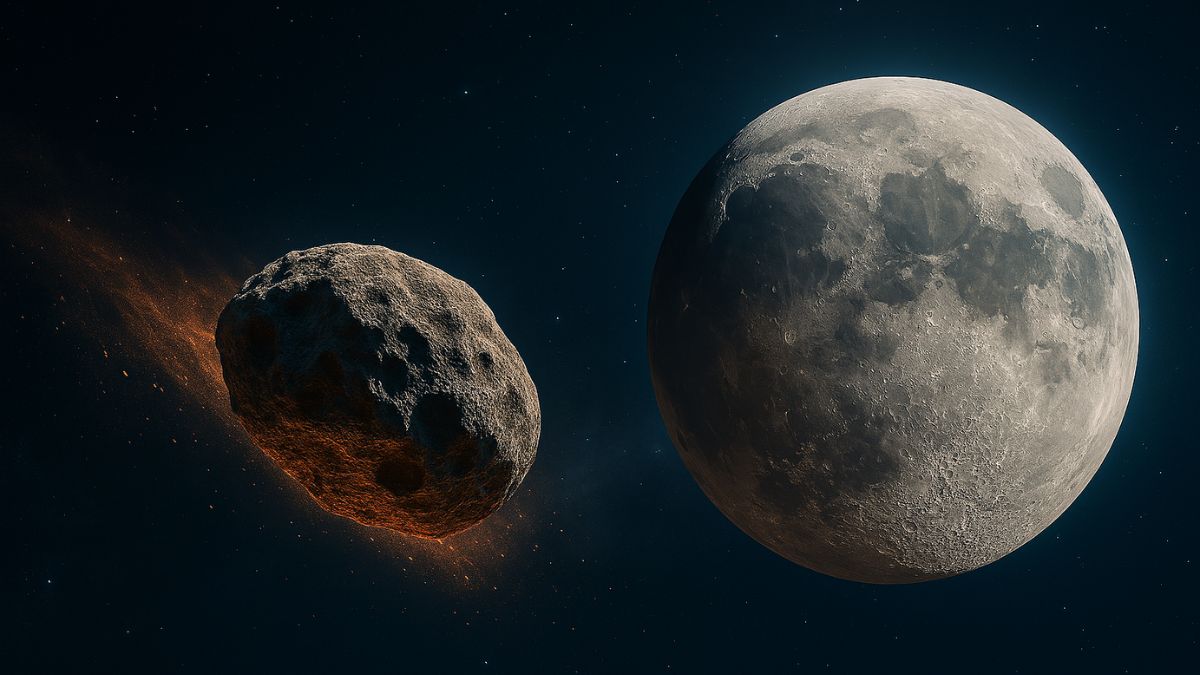Science
The Satellite Swarm Is Now a Threat, NASA Warns
17 December 2025

There is a 4.3 percent chance of a lunar strike in December 2032. Once on course for Earth, the asteroid veered off. NASA plans ‘asteroid to hit the Moon’ missions.
Asteroid 2024 YR4 had, less than a year ago, a 3.1 percent chance of hitting Earth. At first glance that seems low, yet it was the highest probability of such an event ever calculated. The object then altered its course. Its current chance of colliding with our planet is just 0.004 percent. Far more likely, according to NASA, is a strike on the Moon — a 4.3 percent probability.
It might seem that an impact on the Moon is not our problem. There are unlikely to be permanent lunar bases in 2032. The issue is what comes next. An asteroid roughly 60 metres across would generate a vast debris field. The number of micrometeoroids hitting Earth could increase by up to a thousandfold for several days.
It would be a spectacle — the greatest meteor shower in centuries — but also a hazard for satellites in orbit and astronauts aboard space stations. If the ISS is still operating in 2032, the crew could face serious risk.
A team of NASA researchers and several US universities has outlined two scenarios. The first is a gentle deflection of the trajectory. A small impulse would be enough for the asteroid to miss both Earth and the Moon. The earlier we act, the smaller the correction needed. The catch: we must know the mass of 2024 YR4.
The object’s diameter is about 60 metres with a 10 percent margin of error. Mass is harder to estimate. Without knowing the density, we can only guess — from 51 million to more than 711 million kilograms. A miscalculated push could make things worse. What if we nudge the asteroid towards Earth?
NASA is weighing a rescue mission. The ideal moment to launch a reconnaissance probe would be 2028. Just three years to design and launch a mission from scratch? Humanity has never done it so fast. Researchers admit 2024 YR4 probably does not pose a large enough threat to start such an operation. An alternative is retasking existing missions, sacrificing original science goals. Is it worth it?
If deflection fails, there is destruction. We could hit the asteroid with something massive enough to shatter it into fragments of around 10 metres. Difficult, but technically feasible.
There is another option that will stir 1990s cinema nostalgia — a nuclear device. Think Armageddon, minus Bruce Willis. A nuclear detonation at the right altitude above 2024 YR4’s surface could save the Moon. According to researchers, a 1-megaton device would suffice to destroy 2024 YR4 regardless of its internal structure — and that is within today’s nuclear arsenals.
Read how astronomers found an Earth-like planet.
Will 2024 YR4 actually hit the Moon? We should know in 2028, when astronomers refine their calculations. For now, the probability stands at 4 percent. Low — but we must be ready for the consequences. And the window for a decision is narrowing. Can we stop the asteroid in time?
Read this article in Polish: Czy uderzenie w Księżyc zagrozi Ziemi? NASA szykuje misję ratunkową